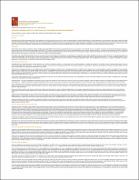| dc.contributor.author | Ssengooba, Freddie | |
| dc.date.accessioned | 2019-02-14T14:00:39Z | |
| dc.date.available | 2019-02-14T14:00:39Z | |
| dc.date.issued | 2004-04 | |
| dc.identifier.issn | 2073-0683 | |
| dc.identifier.uri | http://hdl.handle.net/20.500.12280/1385 | |
| dc.description.abstract | Essential/minimum health care packages (MHCP) have appeared on the primary health care scene as a means of setting priorities for national health budgets. A technical approach of cost-effectiveness was sought to guide the political
and group bargaining approaches. In Uganda, the application of the cost-effectiveness techniques seem not to have had an effect on the priority setting. A package of minimum services that is written into the sector plan has turnout to be more then the resources available in the medium term. At the operational level, the delivery of the minimum package has been rendered ineffective and inefficient, by trying to attain universal access with $ 8 per capita instead of $28. System capacity constraints for effective and equitable delivery of the MCHP are traced at the infrastructure-based planning and in explicit and implicit re-prioritization and rationing within the minimum package. | en_US |
| dc.language.iso | en | en_US |
| dc.publisher | Uganda Martyrs University, Department of Health Sciences | en_US |
| dc.rights | Attribution-NonCommercial-NoDerivs 3.0 United States | * |
| dc.rights.uri | http://creativecommons.org/licenses/by-nc-nd/3.0/us/ | * |
| dc.subject | Essential/Minimum Health Care Packages (MHCP) | en_US |
| dc.subject | National Health Budgets | en_US |
| dc.subject | Cost-effectiveness | en_US |
| dc.title | Uganda’s Minimum Health Care Package: Rationing Within the Minimum? | en_US |
| dc.type | Article | en_US |



